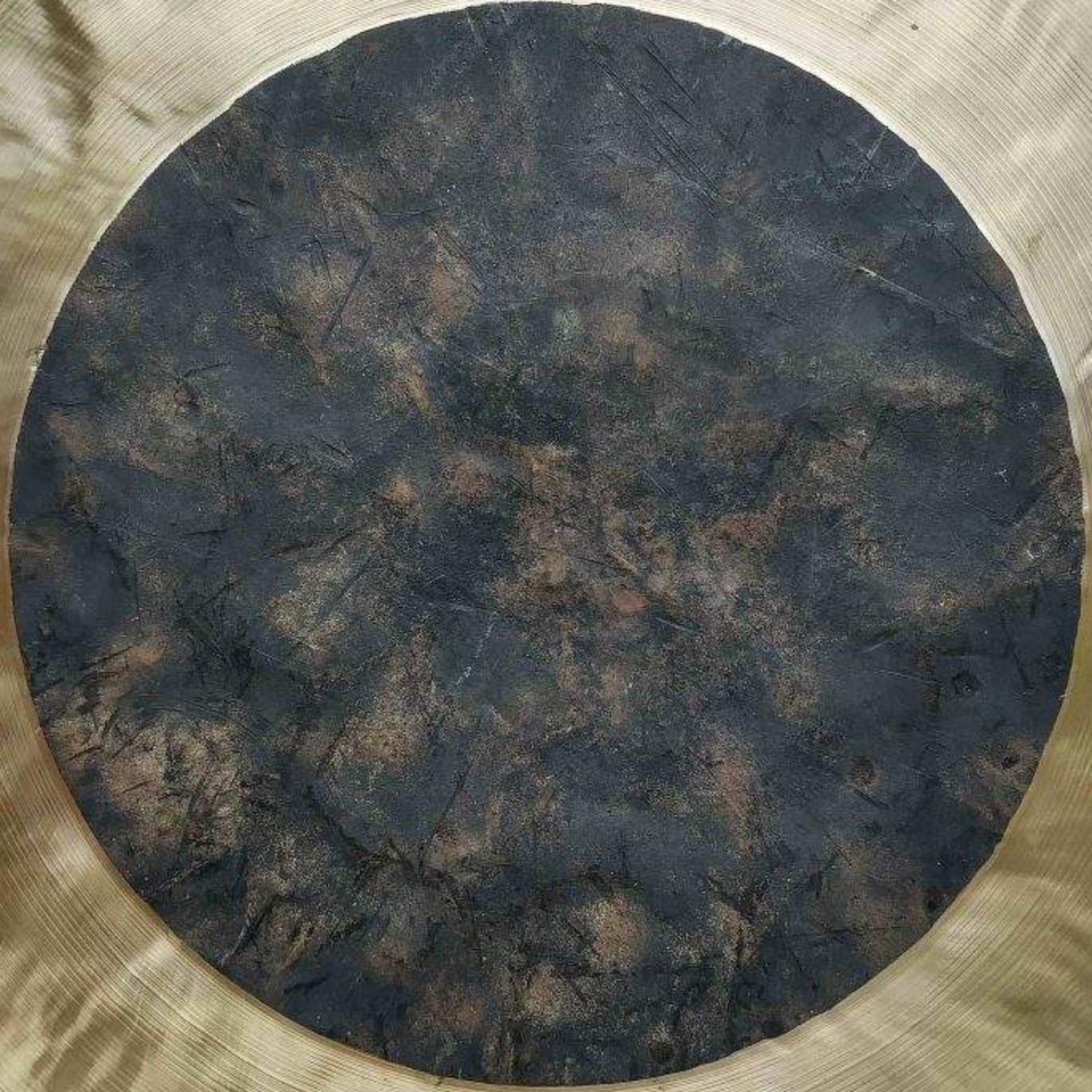Dogecoin Awaits Risk-On Ignition As 2021 Pattern Repeats


Dogecoin is back in a familiar posture on multiple timeframes, according to crypto analyst Osemka (@Osemka8), who argues that price action is tracking the “OTHERS” index almost one-for-one and is now deep inside a textbook Wyckoff accumulation. His latest charts—one a decade-long view, the other a daily structure map—frame the current chop as the classic test phase that tends to exhaust both sides before trend continuation.
Dogecoin’s Perfect Wyckoff Trap
On the long-horizon chart, Dogecoin’s history resolves into a sequence of rounded basing formations that preceded its two vertical advances. The first arc matured from 2014 into 2017 before the initial markup; the second spanned 2018 through 2020 and ended with the 2021 blow-off; and a third, broader arc has been curving under price action from 2022 into 2025.
While DOGE is currently trading below $0.20, the rounding contour is again still intact—visually rhyming with the two prior launch setups that culminated in rapid expansions once supply thinned out above range highs. The shorter-term daily chart annotates the Wyckoff schematic in granular detail. Osemka labels the Preliminary Support (PS) and Selling Climax (SC) earlier in the year, followed by an Automatic Rally (AR) and a Secondary Test (ST) to confirm the lower boundary of a gently rising channel.
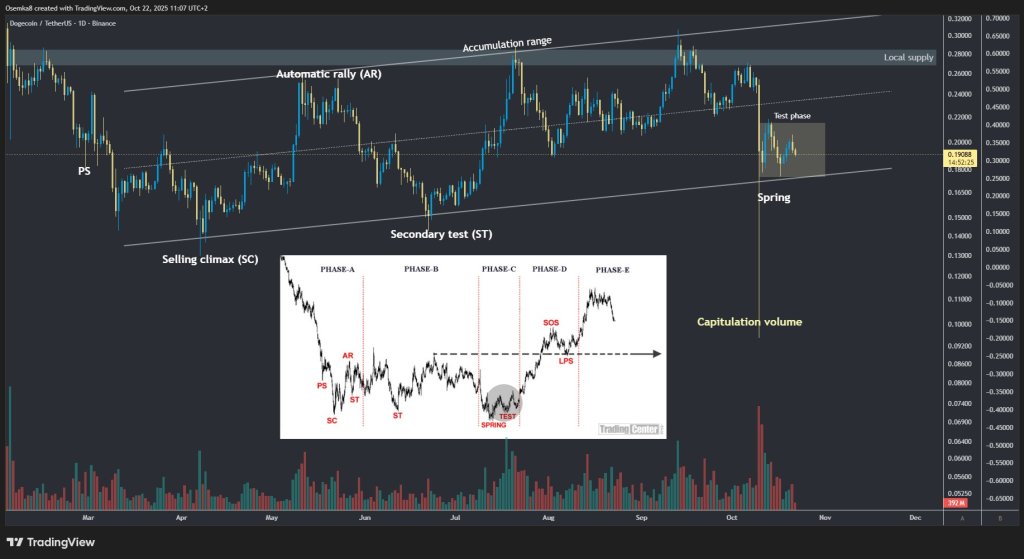
A sharp downdraft into a “Spring”—accompanied by conspicuously high capitulation volume—punctured the channel intraday before snapping back, an action that often functions as the terminal shakeout of Phase C in the classical model.
Since then, price has coiled in what the chart calls the “Test phase,” compressing roughly between $0.18 and $0.22 as bids and offers probe for residual supply. Overhead, a shaded local supply zone sits in the $0.26 to $0.28 area and lines up with the upper half of the channel; the channel’s ceiling runs into the low-$0.30s (~$0.32), where initial supply repeatedly slows advances.
“DOGE coin follows OTHERS index almost 1:1. A perfect Wyckoff accumulation range. Test phase driving everyone nuts,” Osemka noted via X.
Macro Environment Still Not Ready Yet
The analyst’s market read ties the micro to the macro playbook he has tracked before. In an October 7 note, Osemka highlighted that DOGE is typically late to the risk rotation: breadth improves first, IWM (small caps: iShares Russell 2000 ETF) breaks out , alts begin to rise, and only when the OTHERS index clears its prior all-time high does Dogecoin tend to accelerate.
“Rounded bottom on DOGE each time. Since DOGE is that coin that does nothing the entire cycle then rips faces off, it’s interesting to compare what happens after macro environment switches to Risk-on mode. What I can get from this is nothing special. Once IWM breaks out, alts start to rise and DOGE still lags behind, but just a bit. Only once OTHERS breaks it’s ATH is when DOGE starts flying,” the analyst explained.
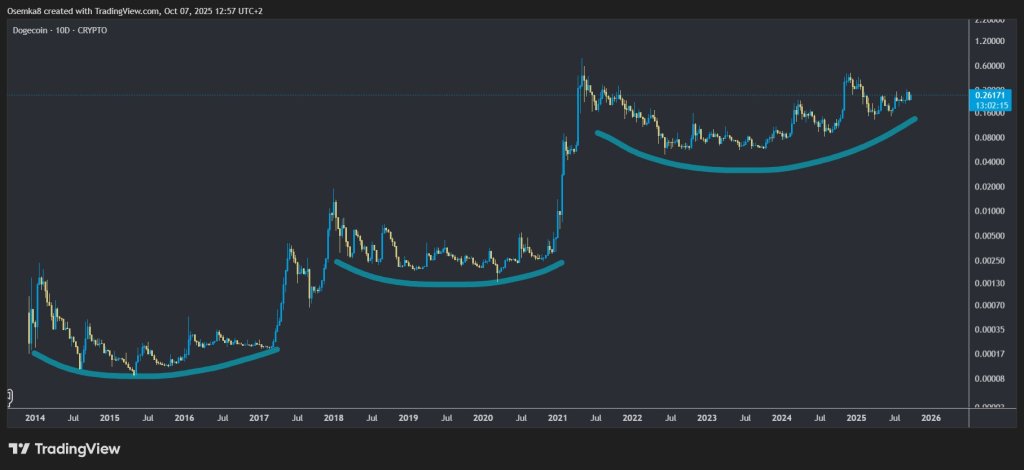
His most recent exchange with followers keeps that conditionality intact; he acknowledges that, by his OTHERS fractal, “one stab lower” remains possible before markup, especially with Bitcoin liquidity a few percent lower on his gauges. In Wyckoff terms, that would be a final test or spring-within-the-spring, designed to validate demand at or just under the $0.18–$0.22 coil before a Sign of Strength (SOS) can assert above $0.32.
Context across the memecoin complex is mixed. Osemka notes that PENGU has been outperforming DOGE on his relative charts “at the moment,” even as he lists TAO, DOGE, and ONDO as the “best-looking setups” for altcoins, with TAO “by far the strongest” and “other alts” screened as weak. The implication is rotation rather than dispersion: DOGE’s structure is constructive, but confirmation still hinges on a clean exit from the accumulation range and the broader risk-on ignition he maps via IWM and OTHERS.
For traders mapping levels off these panels, the near-term battlegrounds are explicit. The test box at $0.18–$0.22 has to hold its series of higher lows to keep Phase D in play; the local supply at $0.26–$0.28 is the first meaningful resistance shelf that must be absorbed; and the rising channel top near ~$0.32 is where bulls take control.
Only sustained acceptance above those bands would upgrade the structure from accumulation to markup, aligning DOGE with the 2017 and 2021 launch sequences that Osemka’s rounded-bottom study brings into focus. Until then, the “perfect Wyckoff trap” characterization remains apt: the range is doing what ranges do—testing patience and conviction—while the intermarket checklist that has historically preceded DOGE’s impulsive legs waits for its final tick.
At press time, DOGE traded at $0.194.
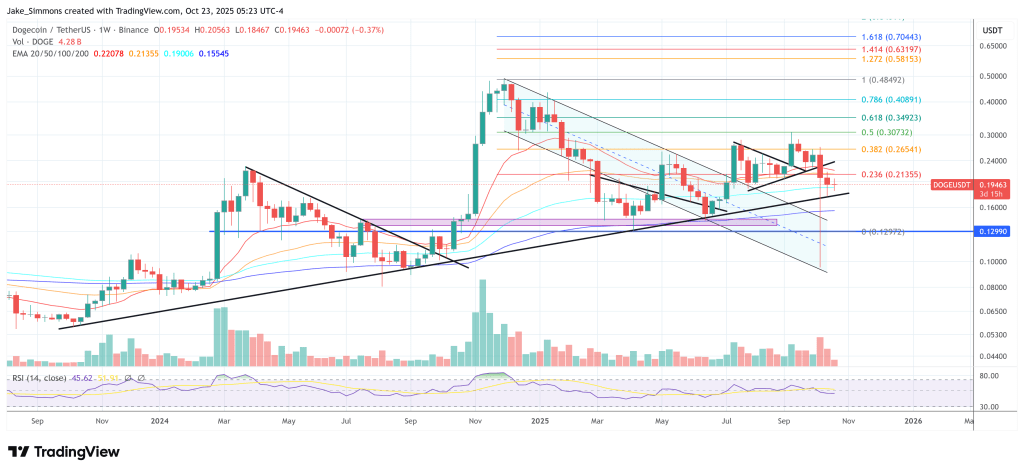
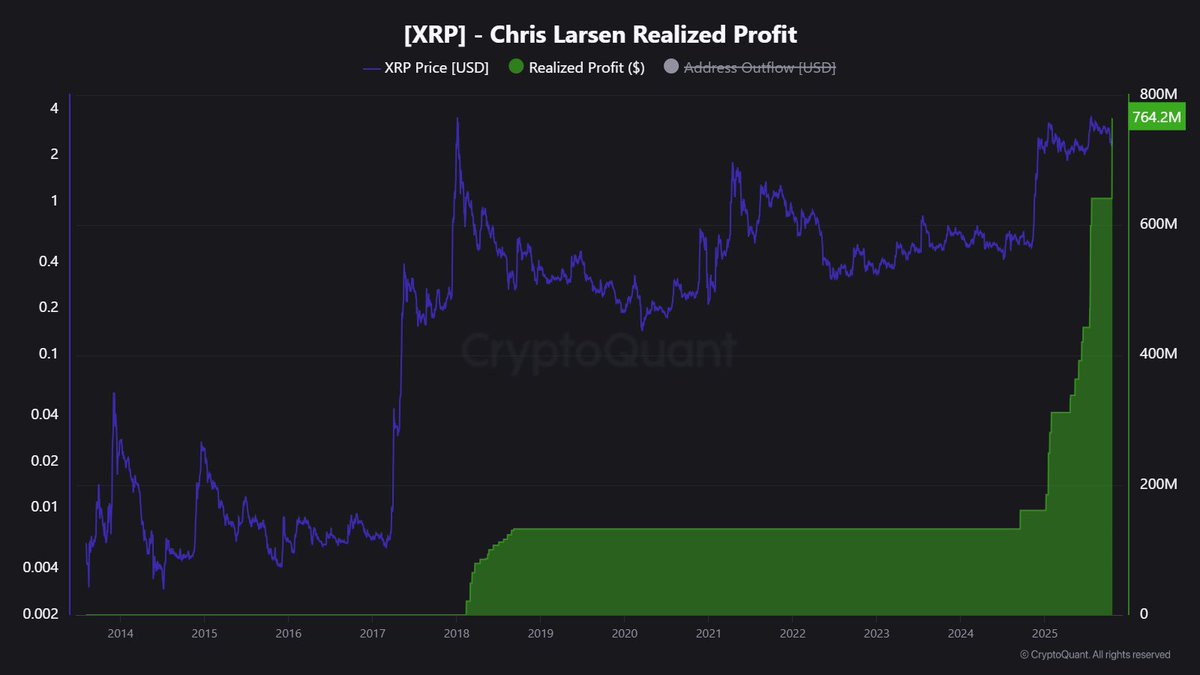
Chris Larsen Cashes Out: $764M In XRP Profits Since 2018
XRP continues to struggle for bullish momentum as market sentiment remains heavily bearish. After we...
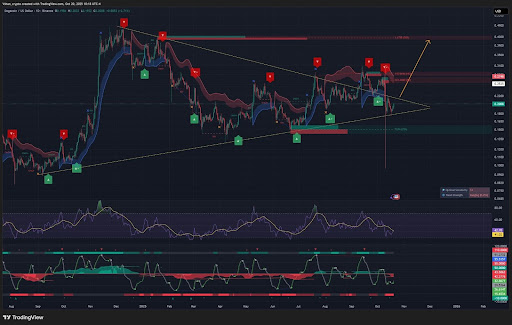
Dogecoin RSI Breakout Shows Main Target, Why $1 Is Still Possible
Dogecoin is getting attention again after crypto analyst Shan Specter shared a new chart on X. In th...
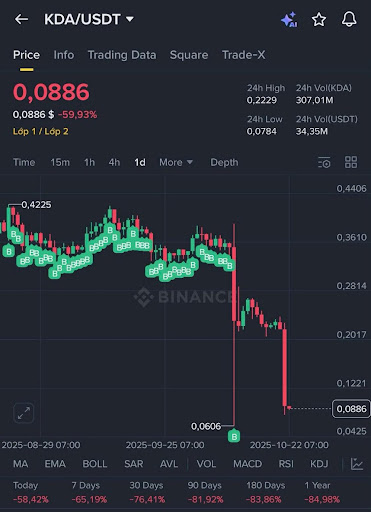
Pundit Drops Bombshell Exposé On Kadena Team After Closure Announcement Saw KDA Price Crash Over 60%
This week, the cryptocurrency community was rocked after Kadena’s sudden shutdown announcement sent ...

